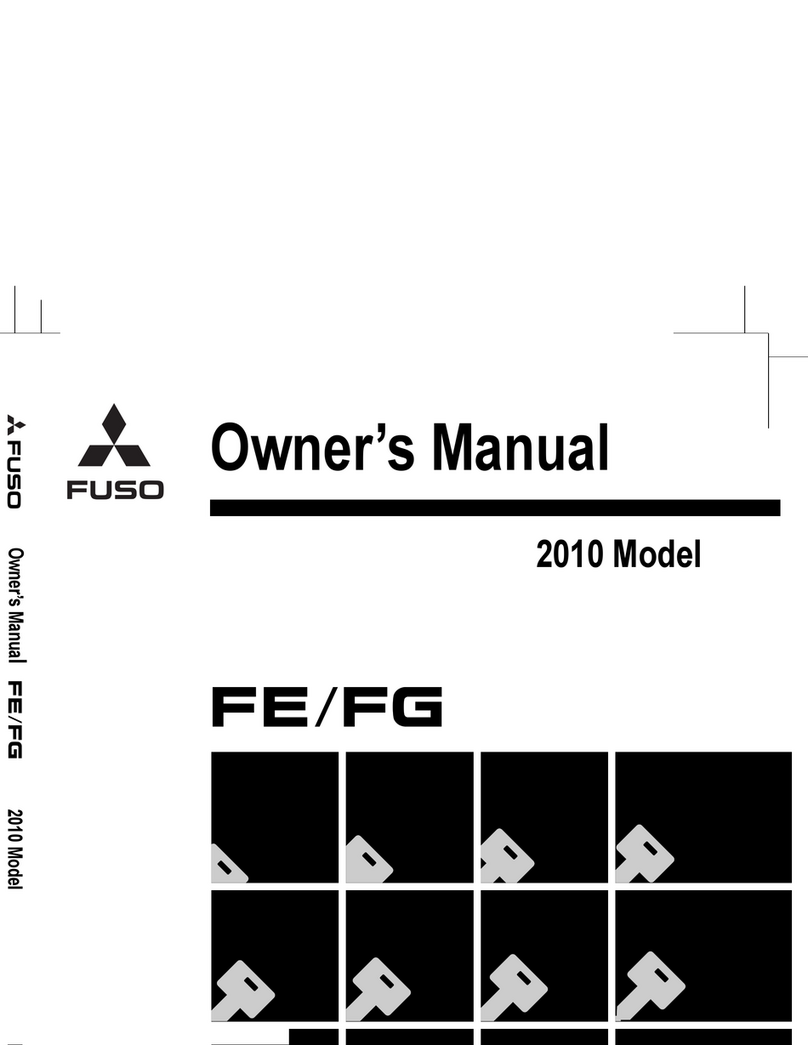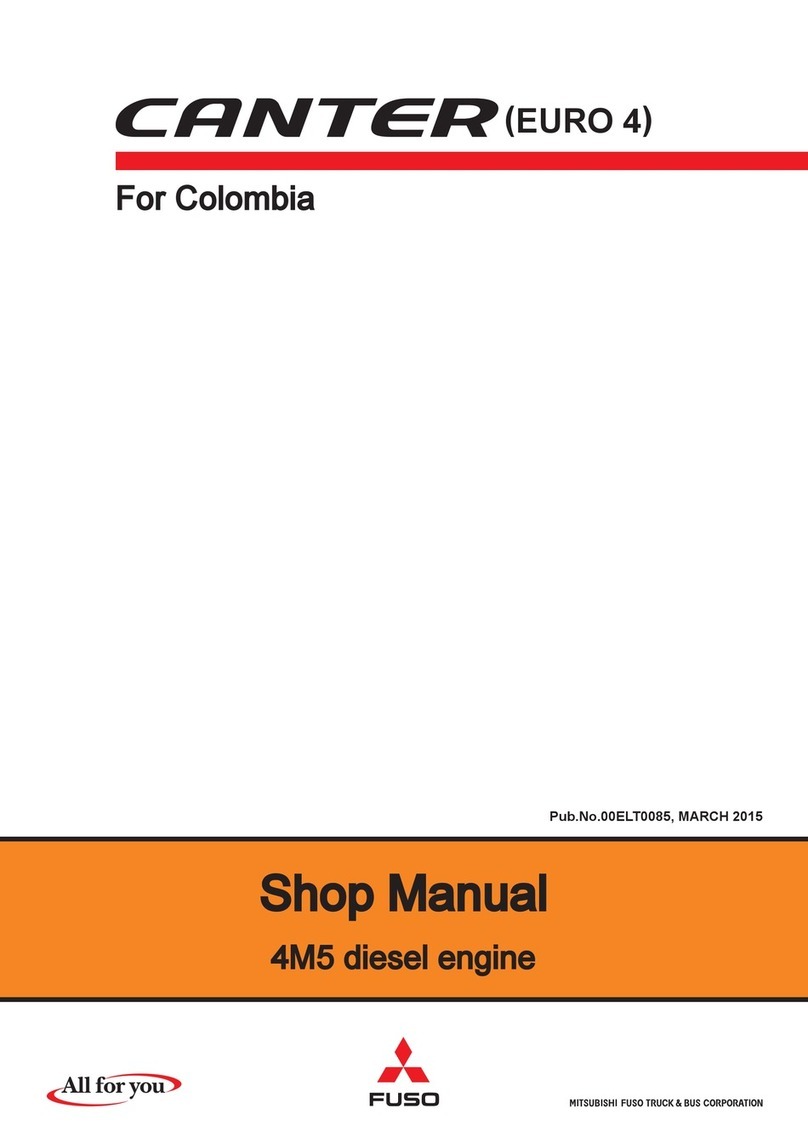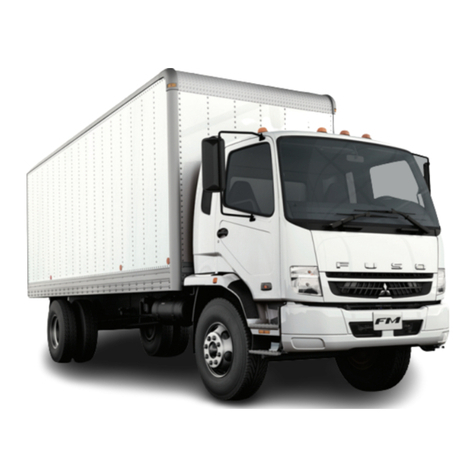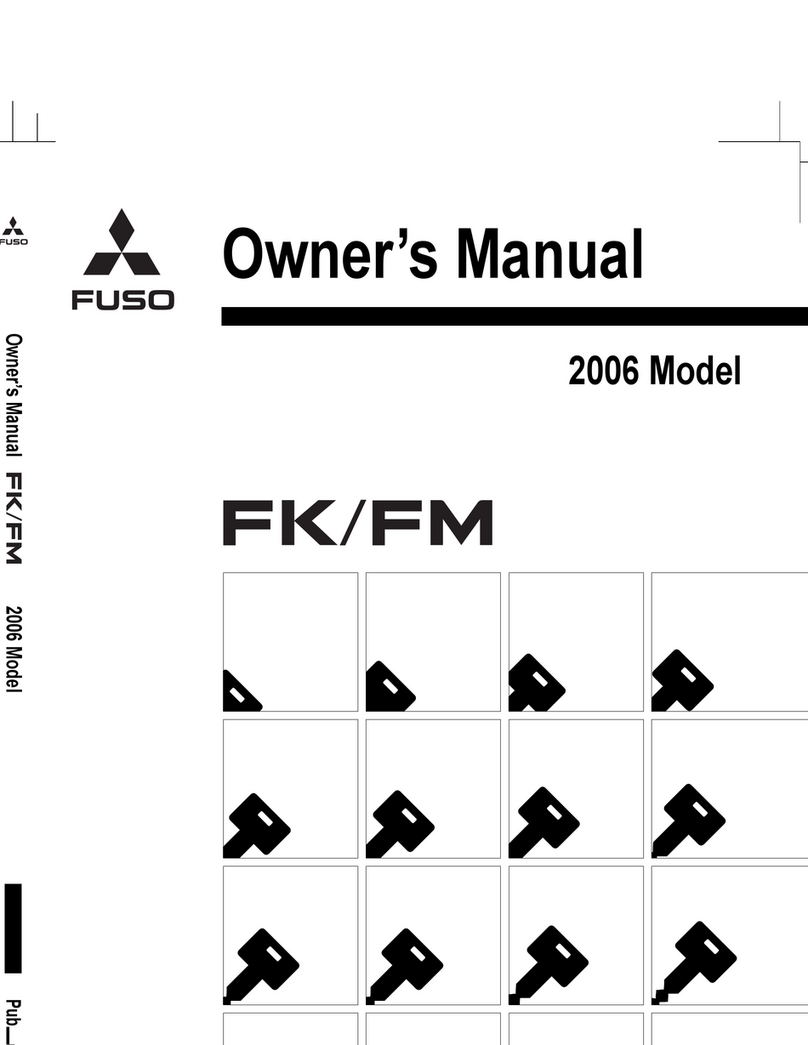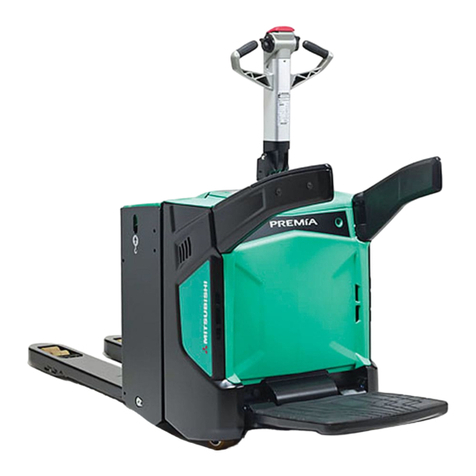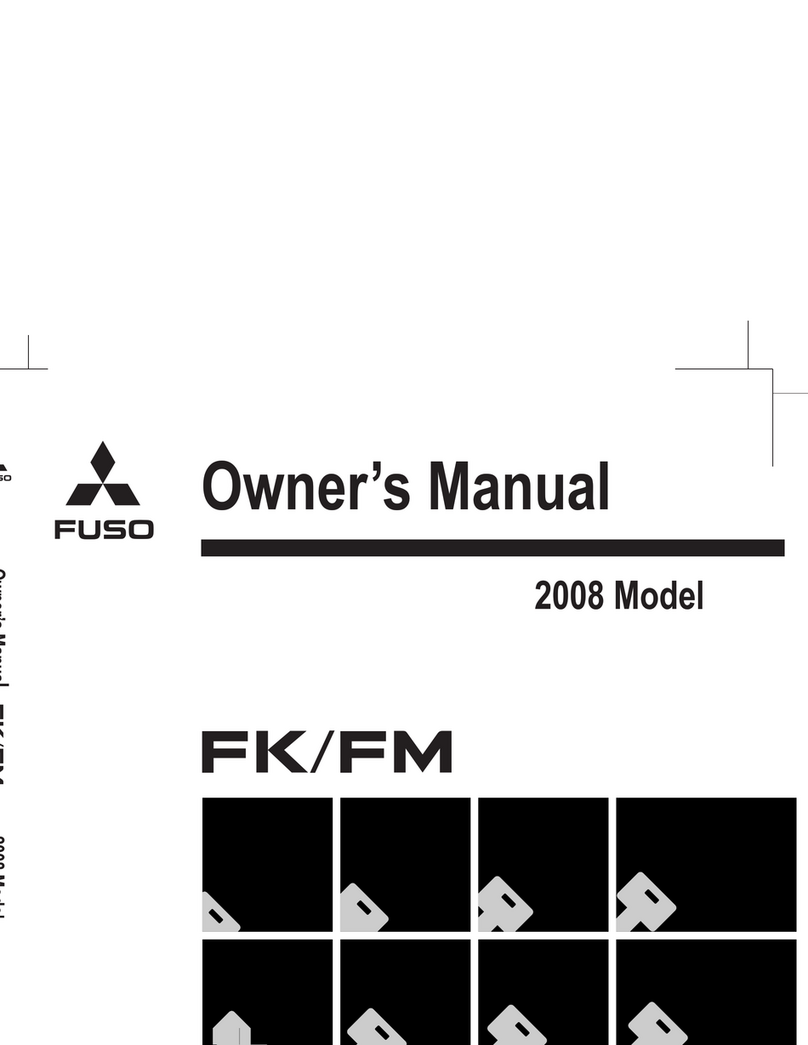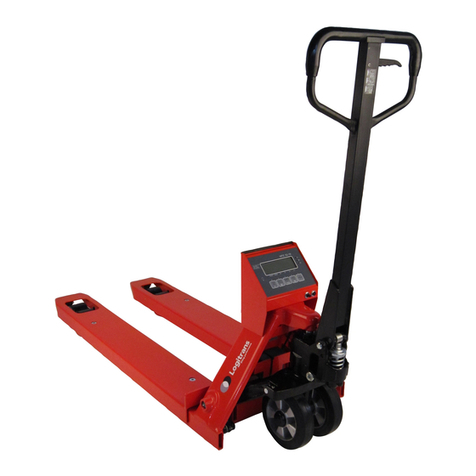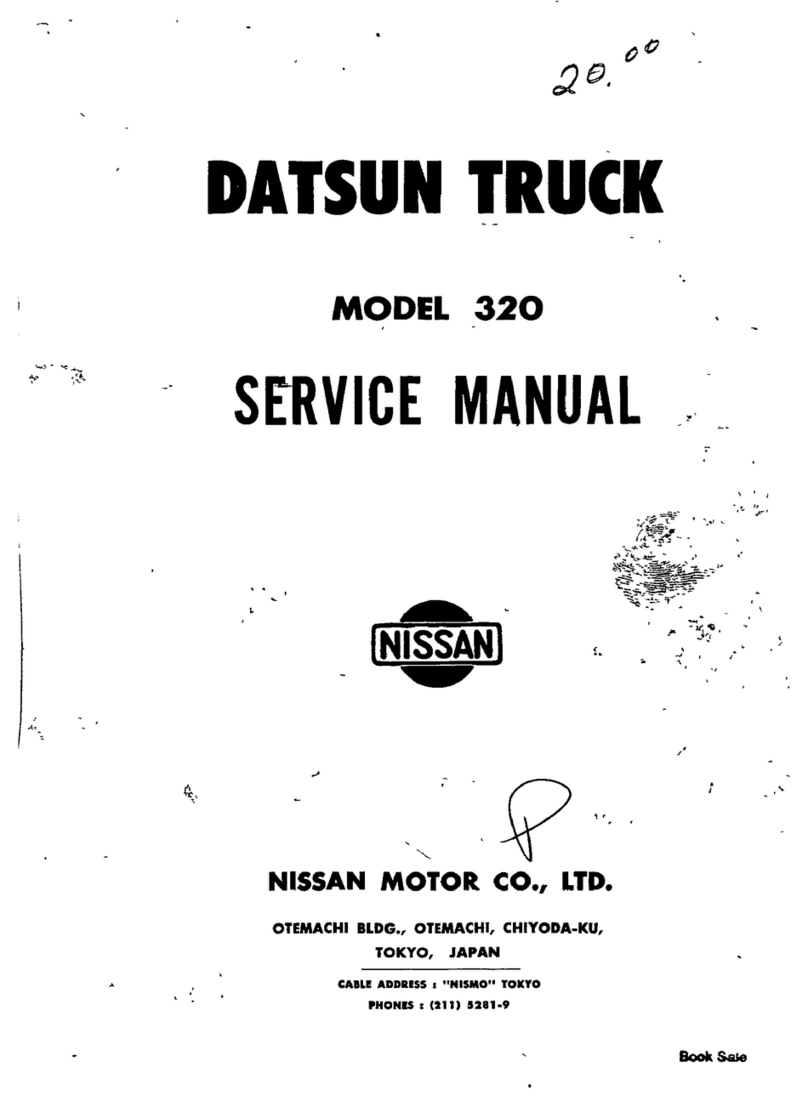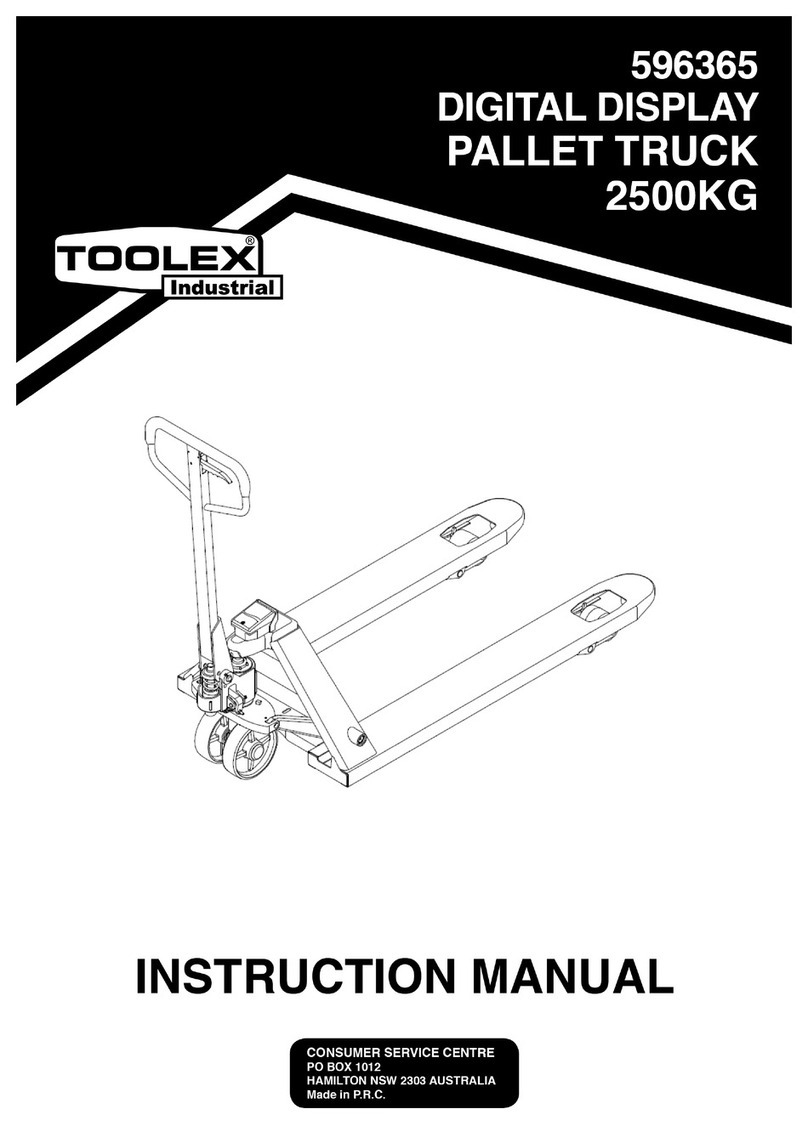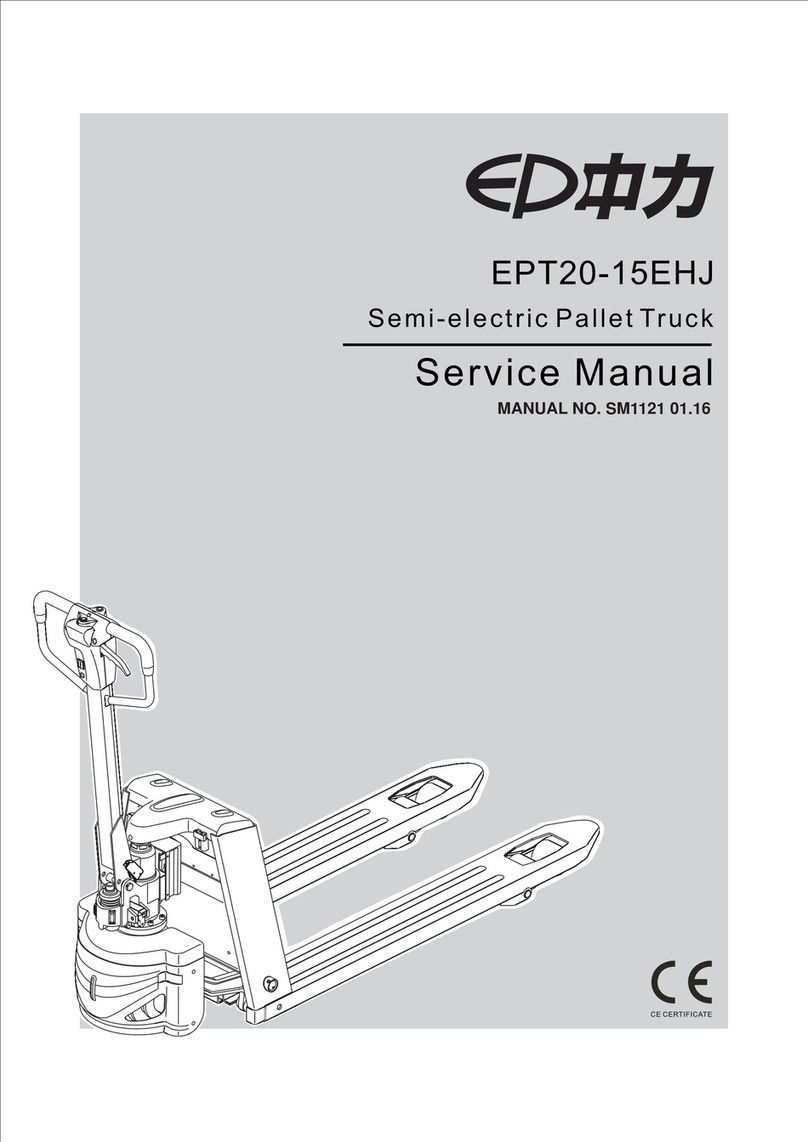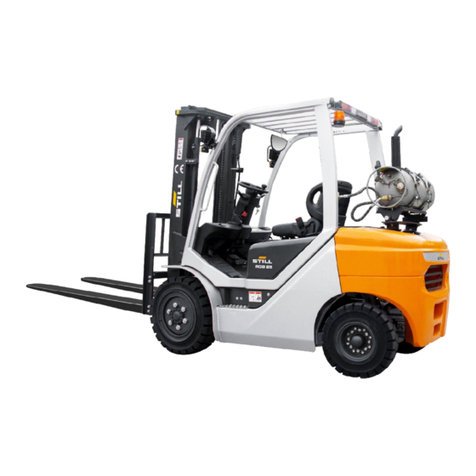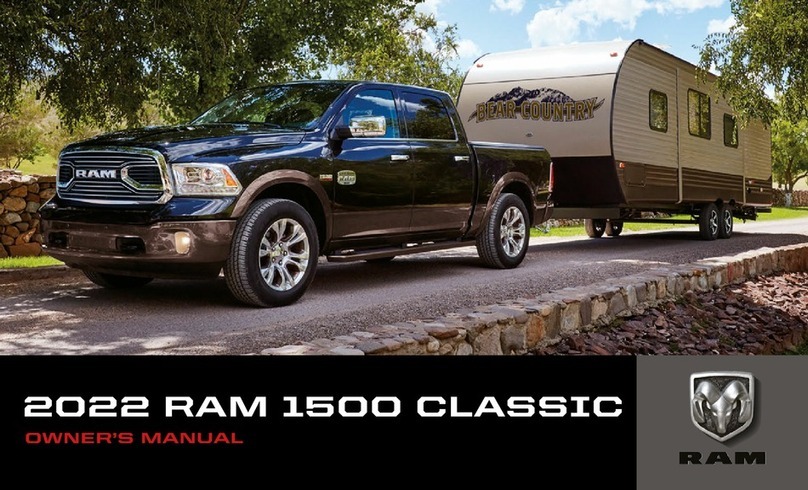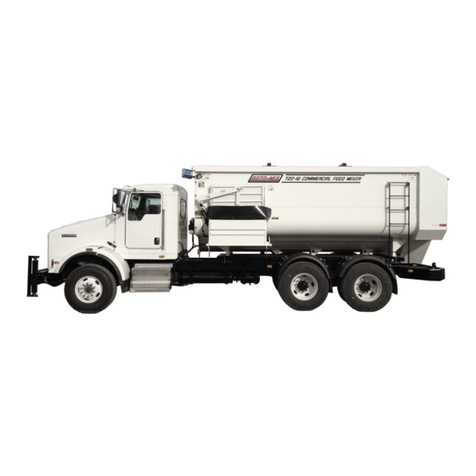Mitsubishi FUSO FH 1997 User manual









Group 00
General
Pub No. TWME9502-00
Table of Contents
BACK
HOME

00-1
00
GROUP 00 GENERAL
MODEL CODING SYSTEM .................................................................... 2
POWER TRAIN TABLE.......................................................................... 3
CHASSIS NUMBER AND ENGINE NUMBER ....................................... 3
POWER TRAIN LABEL.......................................................................... 4
VEHICLE IDENTIFICATION NUMBER .................................................. 4
PRECAUTIONS FOR MAINTENANCE OPERATION............................ 6
TABLE OF STANDARD TIGHTENING TORQUES ............................. 18
CONNECTOR CONFIGURATION CHART .......................................... 22

00-2
Equipment Model Code
Equipment name Model description Code description
Engine 6D34-0AT2 With turbocharger
Stands for automobile These are omitted in the
Remodeling sequence Service Manual
Version number
Series number
Stands for diesel engine
No. of cylinders (6 : Six cylinders)
Clutch C 5 M 33
Disc outer diameter
Facing material (M : Cera-metallic)
Loading capacity of major type (tonnage)
Stands for clutch
Transmission M 050 S 5
No. of forward speeds
Meshing (S : Synchromesh, A : Automatic)
Loading capacity of major type (tonnage)
Stands for transmission
Propeller shaft P 4
Loading capacity of major type (tonnage)
Stands for propeller shaft
Reduction and D 040 H
differential Teeth shape (H : hypoid gear)
Loading capacity of major type (tonnage)
Stands for reduction and differential
MODEL CODING SYSTEM

00-3
00
Final reduc-
tion and
gear ratio
FH211C, E, G,
H, J
G.V.W.
8160 kg
{17995 lb}
6D34T2
175 HP/2900 rpm
325 lbf.ft/2000 rpm
(SAE, Gross)
R040T D040H
4.111
POWERTRAINTABLE/CHASSISNUMBERANDENGINENUMBER
POWER TRAIN TABLE
P4
M050S5
6.875/1.000
C5M33
Rear axle
model
Propeller
shaft
Transmission
model
Clutch
model
Engine
model
Model
Torque
converter
(TC290-1.72)
M4A4
Allison
AT542
3.454/1.000
CHASSIS NUMBER AND ENGINE NUMBER
The serial numbers for chassis and engines are assigned to the respective vehicles and engines in manufacturing
sequence: every vehicle and engine has its own numbers. These numbers are required for registration and incidental
inspection of the vehicle. Please do not fail to mention these numbers to the dealers when ordering spare parts.
14182
14183
Chassis number
Chassis number 1is punch-marked on the frame by the left-side front
wheel.
Example : FH211C–
■■■■■■
Engine number
Engine number 2is punch-marked on the left of the crankcase.
Example : 6D34–
■■■■■■
Chassis
number
Vehicle
model
Engine
number
Engine
model
1
2

00-4
POWER TRAIN LABEL/VEHICLE IDENTIFICATION NUMBER
The vehicle identification number is punch-marked on the plate, which is
attached in the position as illustrated.
The vehicle identification number consists of a 17-digit set of alphanu-
meric characters. Each digit represents the following specifications.
02253
321 H6
JW6CCC1G■TL■ ■ ■ ■ ■ ■
4 5 7 8 9 F G
1
Country J : Japan
2
Make W : Mitsubishi Fuso
3
Vehicle type 6 : Incomplete Vehicle
4
Gross vehicle weight/Brake system C : 7258 to 8845 kg {16001 to 19500 lbs} /Air over hydraulic
5
Line C : FH211
6
Series (Wheelbase) C : 2.6 to 2.9 m {8.6 to 9.5 ft.}
E : 3.2 to 3.5 m {10.5 to 11.5 ft.}
G : 3.8 to 4.1 m {12.5 to 13.4 ft.}
H : 4.1 to 4.4 m {13.5 to 14.4 ft.}
J : 4.4 to 4.7 m {14.5 to 15.4 ft.}
7
Cab chassis type 1 : Chassis cab
8
Engine G : 358 CID Diesel turbocharged and charge air cooled
9
Check digit
F
Model year T : 1996
G
Plant L : Kawasaki-2
H
Plant sequential number
POWER TRAIN LABEL
Power train label 1located in the position illustrated indicates the vehicle
model, chassis number and information relevant to the vehicle’s power
transmission components.
02650
VEHICLE IDENTIFICATION NUMBER
1

00-5
00
MEMO

00-6
• Prepare general and special tools necessary for the maintenance
work.
WARNING–
Do not attempt to use tools other than special tools where use of
special tools is specified in this manual. This will avoid injury or
damage.
In order to determine the condition of the vehicle adequately, attend the vehicle beforehand to find and keep record of the
accumulated mileage, operating condition, what the customer’s demand is, and other information that may be necessary.
Prepare the steps to be taken and perform efficient and wasteless maintenance procedure.
PRECAUTIONS FOR MAINTENANCE OPERATION
Determine where the fault exists and check for the cause to see whether
removal or disassembly of the part is necessary. Then follow the proce-
dure specified by this manual.
06473
00008
00009
14192
Perform maintenance work at a level area.
Prepare the following.
• To prevent the seats, upholstery, floor and bodywork from being
spoiled or scratched, cover with workshop sheet cover(s).
When jacking up the vehicle to work under the vehicle, carry out the
following preparatory work:
• Chock the wheels on both sides.
• Jack up the vehicle using a garage jack.
• Support the frame on rigid racks.
WARNING–
• Chock the wheels securely so the vehicle does not move.
• Do not remove the chocks until the entire operation is completed.
• Supporting a vehicle on a garage jack only is extremely danger-
ous, so always support the frame on rigid racks.
• Leave the garage jack and rigid racks in place until the entire
operation is completed. Never remove them during the operation.

00-7
00
14193
When tilting the cab, be sure to insert the safety pin into the cab stay so
that the cab stay remains locked and is not released when the cab is
tilted.
Pay special attention to safety when removing or installing heavy items
such as engines, transmissions and axles.
When lifting up heavy items using cables, pay special attention to the
following points:
• Check the mass of the item to be lifted and use a cable capable of
lifting that mass.
14194
14195
• If you do not have the specified lifting hanger, secure the item using
cable taking the point-of-balance of the item into consideration.
14196
• You must work in a position where you will not be injured even if the
cable comes undone and the lifted item falls.

00-8
Be particularly careful not to work in shoes that have oily soles and are
slippery. When working as a team of two or more, arrange signals in
advance and keep confirming safety. Be careful not to accidentally bump
switches or levers.
00012
Check for oil leakage before cleaning the area having the fault otherwise
you might miss detecting the leakage.
00013
00014
Prepare replacement part(s) beforehand.
Replace oil seals, packing, O-rings and other rubber parts; gaskets and
split pins with new parts whenever any of them has been removed. Use
only genuine MITSUBISHI replacement parts.
00015
00016
On disassembly, visually inspect all parts for wear and tear, cracks,
damage, deformation, degradation, rust, corrosion, smoothness in rota-
tion, fatigue, clogging and any other possible defect.
PRECAUTIONS FOR MAINTENANCE OPERATION

00-9
00
Put alignment marks on part combinations before disassembly and ar-
range the disassembled parts neatly. This will help avoid mismating of
the parts later.
Put the alignment marks, punch marks, etc. where performance and
appearance will not be affected.
Cover the area left open after removal of parts to keep it free from dust.
CAUTION–
• Take care to avoid mixing up numerous parts, similar parts, left
and right, etc.
• Keep new parts for replacement and original (removed) parts
separate.
00018
Apply the specified oil or grease to U-packings, oil seals, dust seals and
bearings during assembly.
Use only the specified oil, grease, etc. for lubricant, remove the excess
immediately after application with a piece of waste, etc.
CAUTION–
When the specified lubricant, fluid and sealant is not available,
you may use an equivalent.
00019
Wear goggles when using a grinder or welder. Pay full attention to safety
by wearing gloves when necessary. Watch out for sharp edges, etc. that
might injure your hands or fingers.
14184
Before carrying out maintenance work on the electric system, disconnect
the negative terminals of the batteries to prevent them from short-
circuiting and burning-out.
CAUTION–
Be sure to turn starter and lighting switches, etc. off before
disconnecting or connecting battery terminals, because the semi-
conductors can be damaged.
00017

00-10
00021
00022
00023
10638
Take care when handling sensors, relays, etc. which are vulnerable to
shock and heat. Do not attempt to remove the cover from, or apply paint
to, the electronic control unit.
Pull the connector, and not the harness lead, to separate connectors. To
separate a lock-type connector, first push toward arrow mark. To recon-
nect a lock-type connector, press the separated parts until they click
together.
When washing the vehicle, cover the electric system parts and instru-
ments with waterproof material beforehand (Cover with vinyl sheet or the
like). Keep water away from harness wire connectors and sensors. If any
of them should get wet, wipe them off immediately.
When using an electric welder, such electronic parts that are directly
connected to the batteries might be damaged due to the flow of current
from the welder that flows through the negative circuit. Parts that have
switches might be subject to the same danger if the switches are left on.
Therefore, do not fail to observe the following.
A: Welder
B: Connect the negative terminal of the welder as near as possible
to
the area that is to be welded.
AB
PRECAUTIONS FOR MAINTENANCE OPERATION

00-11
00
10639
00027
14185
To apply voltage for testing, check that the positive and negative cables
are connected properly, then increase voltage gradually from
0 volt. Do not apply voltage higher than the specified value.
In particular, pay close attention to the electronic control unit and sen-
sors, since they are not always fed the battery voltage.
When using testers or the like for continuity tests, be careful not to allow
test probes to touch the wrong terminals.
• Disconnect the negative terminals of batteries.
• Disconnect connections between the cab harness wires and the chas-
sis harness wires.
Table of contents
Other Mitsubishi Truck manuals
Popular Truck manuals by other brands

AluTeam
AluTeam BR 13x-3 Assembly instructions

Noblelift
Noblelift PTE15Q-A instruction manual
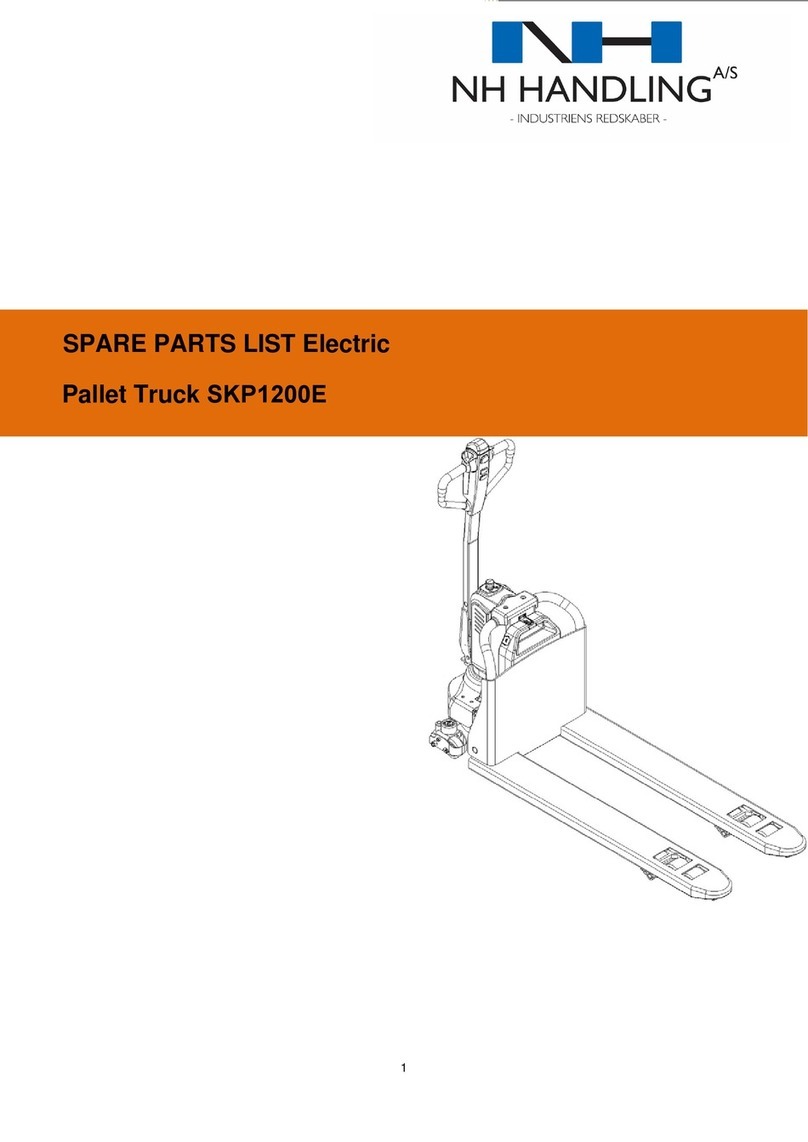
NH Handling
NH Handling SKP1200E Instruction handbook
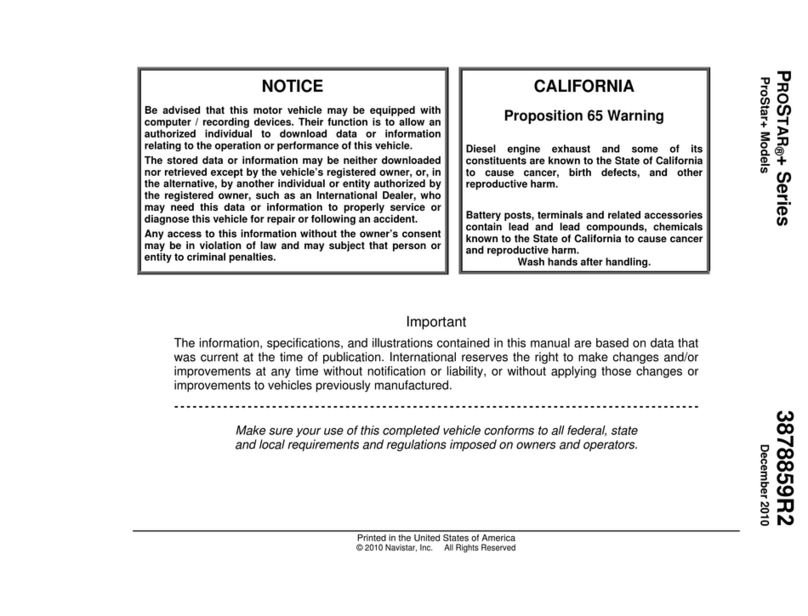
International Trucks
International Trucks ProStar+ Series Operator's manual
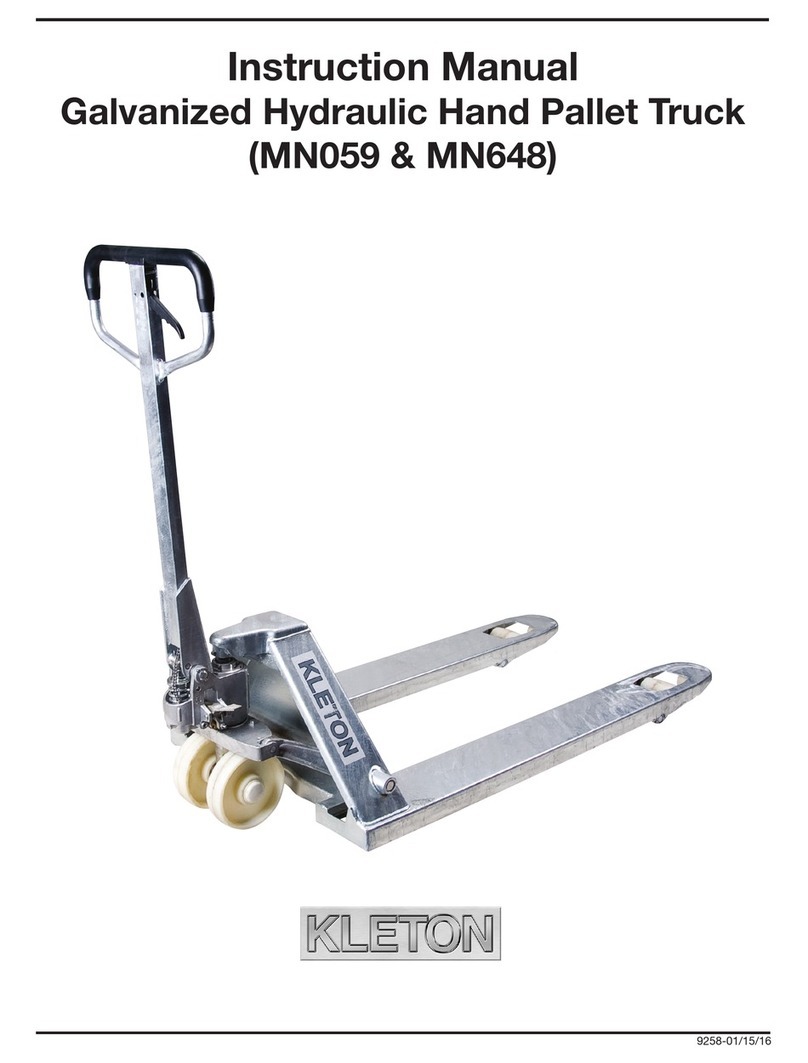
Kleton
Kleton MN059 instruction manual

Mercedes-Benz
Mercedes-Benz Unimog BlueTec 6 Technical manual
